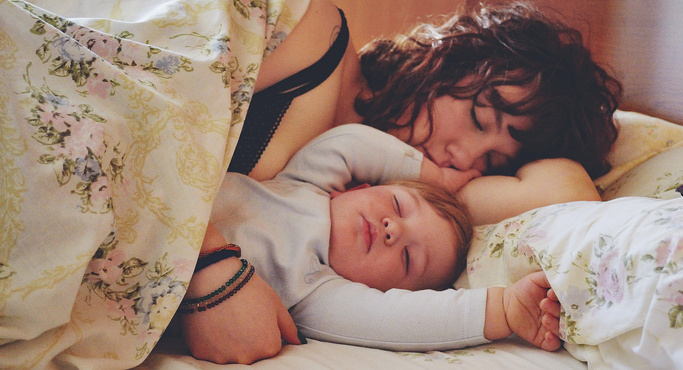We are Humana. We care for babies and families.
Who we are and what we do.
read more
Breastfeeding is, by its very nature, the best thing you can do for your baby. However, it doesn't work out immediately for all mothers, and there will always be difficult phases. We accompany you through these challenging times so that you and your little sunshine can quickly get back to experiencing many more of those intimate moments of connection.
As much as most mothers would like to breastfeed, every now and then it unfortunately doesn't quite work out. There can be various reasons for this, such as stress, breast infections, a low milk supply or a child's weak suction. We have gathered a few basic tips that can help you prevent breastfeeding problems.
If you are having problems with breastfeeding, please speak to your midwife or your paediatrician. With expert advice you can either solve or prevent many issues.

In general, the more you feed your child, the more you stimulate milk production. If you don't feed your child often enough or don't achieve a good latch, it can lead to too little milk production, blocked milk ducts or even breast infections. Check out our tips for achieving a good latch here.

Through breast milk, your child is given a lot of your fluids and nutrients. Therefore, it is important you regularly have enough to eat and drink. A balanced diet with adequate nutrients is the be-all and end-all for breastfeeding mothers. You will find tips for nutrition during the breastfeeding phase here.

After the effort of childbirth most mothers feel worn out and exhausted. One of the reasons for this is the release of stress hormones like cortisol and dopamine, which also inhibit milk production. To prevent this from happening, you should treat yourself to a break from time to time and not put yourself under too much pressure when you breastfeed.
When you begin breastfeeding, the new experience of your newborn suckling on your nipples, often for long periods, may take its toll on them. So that this doesn't lead to pain or even cracked and bleeding nipples, make sure you learn good breastfeeding techniques. Be sure to get support from your midwife or lactation consultant. It is important that you do not carry the whole weight of your child while you breastfeed, and instead use cushions, rolled-up towels or blankets to support the newborn's body. Take as much time as you need to find the position that works best for you, because a good breastfeeding position is half the battle.
When the child is lying correctly, it is important that their mouth is open very wide because — especially at the beginning of breastfeeding — the relative sizes of the nipple and the newborn's mouth are not yet ideal. Your midwife can show you how to gently push the child's lower jaw downwards so that they can attach really well to the nipple. For your child's first 2 or 3 sucks, it's a good idea to take a deep breath. It relaxes you and lessens the pain of the initial latching sucks, which is normal at first.
So that you don't always overwork the same area of the nipple, you should change your breastfeeding position frequently. Furthermore, it is a good idea to use reusable breast pads made of wool, silk, cotton or silicone. It saves money and it is more eco-friendly. Creams with lanolin, breast pads and hydrogel pads can also help. The good thing about these medical remedies is that they do not have to be rinsed off after use, which is counterproductive when it comes to the health of your nipples. Be cautious with the decision to use aids such as nipple shields at the start because they often cause more problems than they solve.
Fortunately, breast infections are not very common and are not a reason to stop breastfeeding.
However, it is important that you treat the infection quickly because they often spread rapidly. Contact your midwife immediately if you experience strong, stinging pain or if you notice red, abnormally warm and hardened areas of the breast. Always keep a pound of curd in your fridge for emergencies. A cooling breast wrap (please do not include the nipple area) can lessen the pain and reduce inflammation. In addition: have lots of bedrest!
Your midwife can recommend further helpful remedies such as acupuncture, special breast wraps or homeopathic substances that stop the inflammation as well as advise you on which painkillers are suitable when breastfeeding. If your symptoms do not improve within 48 hours you must consult your gynaecologist who can then prescribe antibiotics. But don't worry, this medication will not harm your child and you can continue to breastfeed as usual.
Blocked milk ducts often arise at the beginning of breastfeeding when your mature milk comes in — but can also appear later on when the time between two feeds is very long or if you are wearing an ill-fitting bra that constricts the breasts. The mature milk comes in between the third and fifth days after birth. This can cause the mammary glands to swell and put pressure on the milk ducts. As a result, it is harder for the milk to drain, and the breasts appear much bigger, are very firm and are sometimes abnormally warm. When the milk ducts are blocked, milk flow has to be stimulated. The easiest way to do this is to have a warm shower. Moist, warm breast wraps treated with ginger and lavender (as an oil, for example) can also help. To reduce the inflammation, you should also cool the breast after each feed. Massaging the breast in the direction of the nipple should only be done very lightly, if at all. Strong strokes, squeezing or pressing the breast leads to more blockages. Even pumping to relieve pressure is seldom recommended. It stresses the mother and often exacerbates the problem. It is far more important for the mother to get some rest.
When a child is having trouble latching to the breast, it could be down to one of many causes that have to be clarified individually with your midwife or lactation consultant. Usually it occurs because the child has been offered too many feeding options in the first days and weeks, thereby confusing them. In comparison to a finger, dummy or different bottle teats, a nipple is far less appealing. If the child has already been bottle-fed or fed through nipple shields, they expect firm gum stimulation that a nipple simply cannot provide. Therefore, if possible, do not use nipple shields or dummies. Also don't let the father bottle-feed your pumped breast milk for the first 8 weeks. Drinking from a bottle takes far less effort so breastfeeding also provides natural protection against overfeeding. The newborn has to work really hard to get their milk. Your baby doesn't fall asleep just because they are full, they are also exhausted.